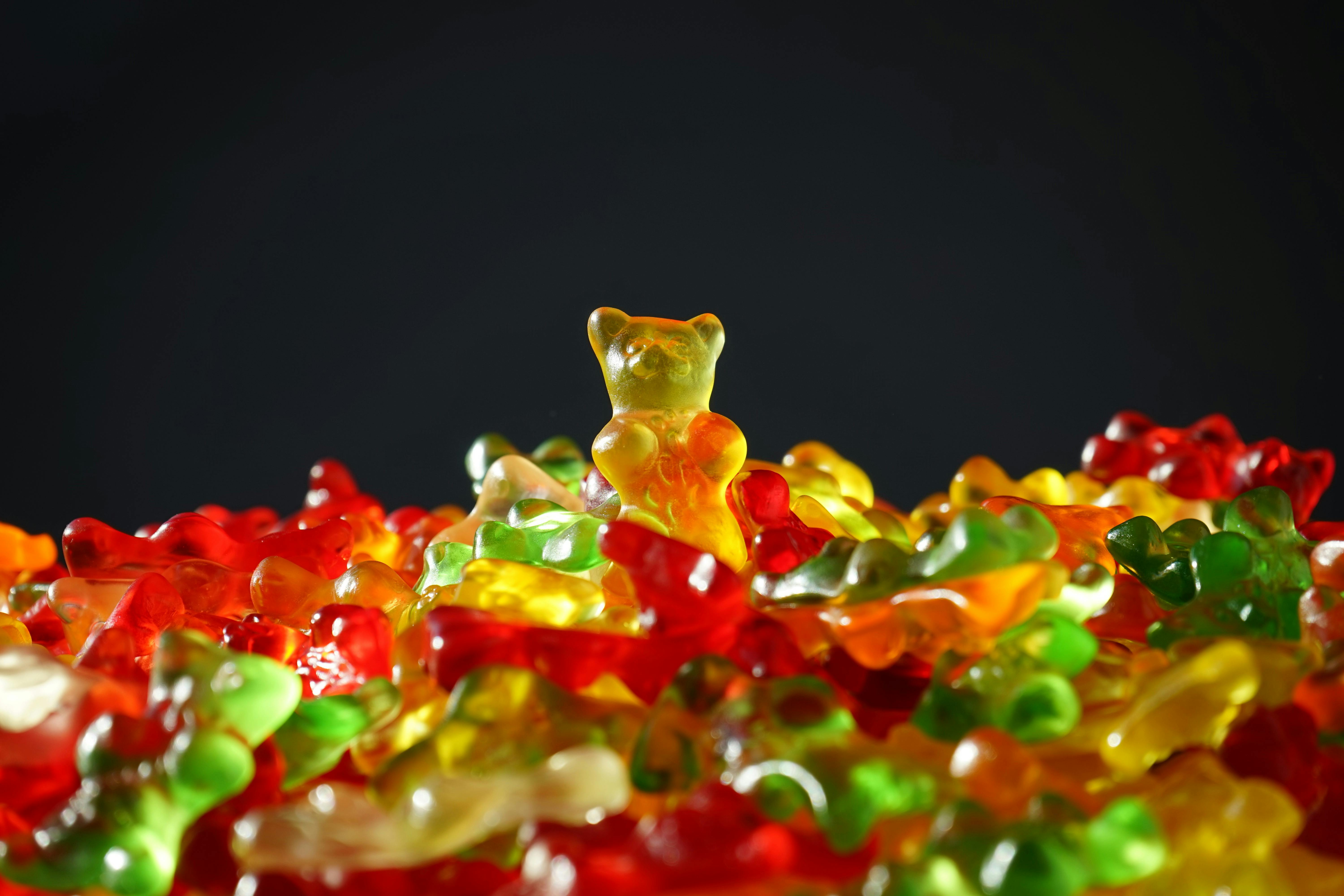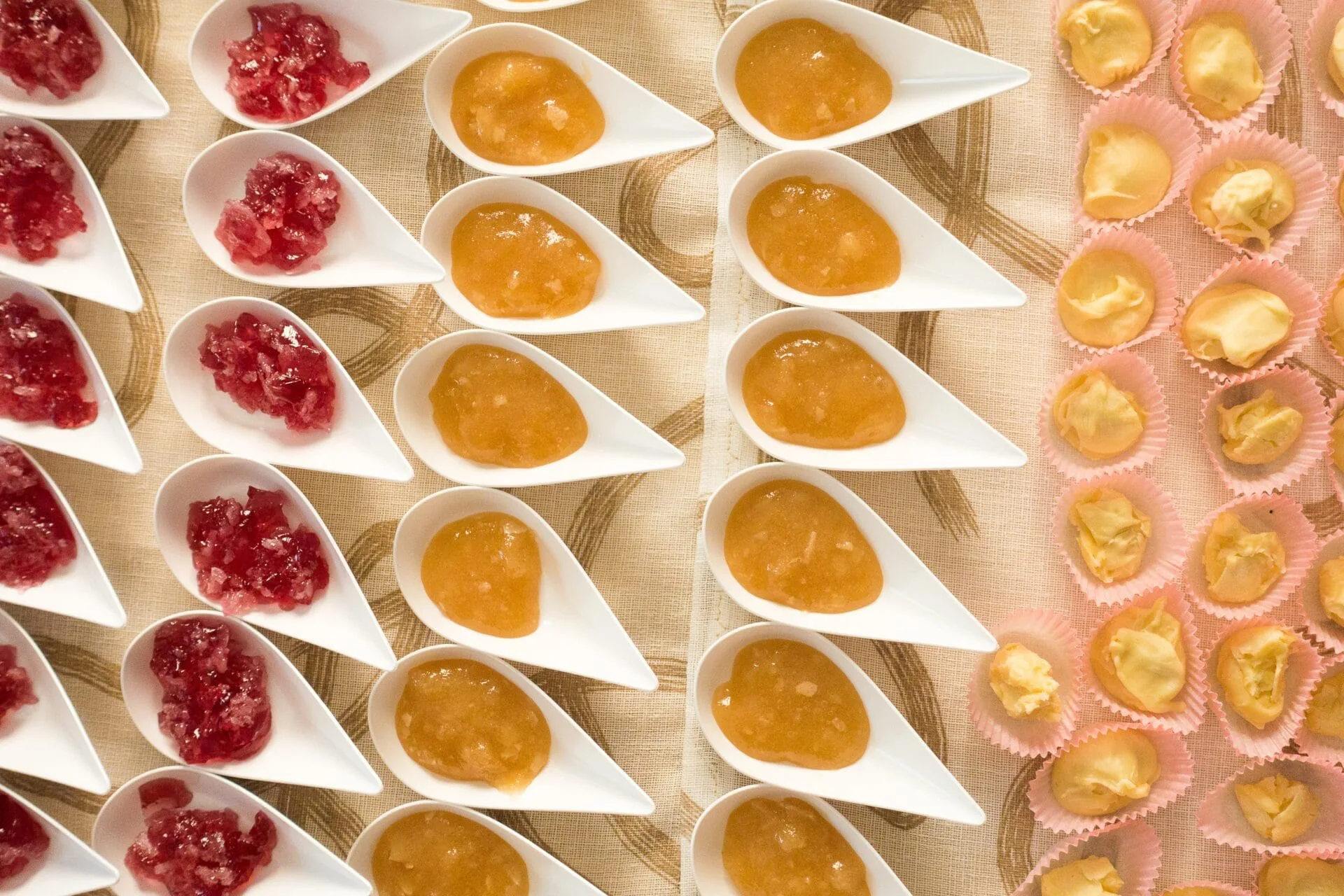Do jelly fruits have gelatin? This is a question that has been asked by many people and the answer may surprise you. Gelatin is an animal derived protein that is commonly used as a gelling agent in many food products, so the answer to this question is not as simple as you might think. In this article, we will explore what gelatin is, how it is used in jellied fruits, and how to identify if a product contains gelatin or not.Jelly Fruits are small, soft, gelatinous candies made from fruit juice and sugar. They come in a variety of fun shapes and colors and have a light, refreshing taste. Jelly Fruits are often used to decorate cakes and other desserts, as well as being enjoyed on their own as a sweet treat.
Jelly and Gelatin
Jelly and gelatin are both gelatinous substances made from a combination of water, sugar, and a gelling agent. Although they are similar in composition and have many uses in cooking, jelly and gelatin have some key differences.
Jelly is a sweetened, flavored, fruit-based product that is usually served as a dessert or accompaniment to food. It has a soft consistency with a spreadable texture. It is often made with pectin, which is derived from fruits or vegetables such as apples or carrots. Jelly can also be used as an ingredient in baking recipes or as a topping for desserts.
Gelatin is an odorless, colorless powder made from collagen that has been extracted from animal bones and connective tissues. It has no flavor of its own but absorbs the flavor of whatever it is added to. When dissolved in hot water, it forms a clear solution that solidifies when cooled; this property makes it useful for setting desserts like mousses, jellies, custards, and ice creams. Gelatin can also be used to make savory dishes such as stuffing or pate.
The key difference between jelly and gelatin is the type of gelling agent they contain: jelly contains pectin while gelatin contains collagen. Another difference between the two is that jelly often contains pieces of fruit while gelatin does not; depending on the recipe, gelatin may contain other ingredients such as sugar or flavorings. Finally, jelly usually has a sweeter taste than gelatin does since it typically contains some form of sugar or sweetener.
What is the Main Ingredient of Jelly Fruits?
Jelly fruits are a popular treat that can be found in many supermarkets and convenience stores. They come in a variety of flavors and colors, making them a favorite among kids and adults alike. But what exactly are these treats made of? The main ingredient found in jelly fruits is gelatine, which is a type of protein derived from animal collagen. Gelatine has been used for centuries to create all sorts of food products, including candy, marshmallows, jellies, and more.
In order to make jelly fruits, gelatine is combined with water and other ingredients like sugar or cornstarch to create a thick paste-like substance. This paste is then poured into molds in the shape of various fruits such as apples, oranges, lemons, limes, bananas and so on. Once the mixture has hardened it is cut into individual pieces and packaged for sale.
Jelly fruits are not only tasty but they also provide some health benefits as well. Gelatine contains essential amino acids that help build muscle mass and promote healthy skin and nails. It also helps to strengthen bones by boosting calcium absorption in the body. Additionally, it helps to soothe an upset stomach by coating the lining of the stomach with a protective layer which prevents acid reflux or heartburn.
Overall, jelly fruits make for an enjoyable snack that can be enjoyed by both children and adults alike. Not only do they taste great but they are also quite healthy thanks to the main ingredient: gelatine!
Making Jelly Fruits
Jelly fruits are made with a variety of ingredients, including gelatin, sugar, and fruit juice. The gelatin is dissolved in hot water to create a thick liquid. Sugar is added to sweeten the mixture, and then fruit juice is added to give it flavor. The mixture is then poured into molds and allowed to cool and set. Once the jelly has set, it can be cut into shapes or slices and served.
For added color and flavor, other ingredients such as food coloring, extracts or liqueurs can be added to the mixture before it sets. Some jelly fruits may also be filled with a cream or custard filling for an extra layer of sweetness. The jelly fruits are then finished off with a light dusting of sugar or sprinkles for decoration.
Making jelly fruits at home is a fun activity that can be enjoyed by both adults and children alike. With just a few simple ingredients, anyone can make delicious homemade treats that will delight family and friends alike!
Are There Any Health Benefits to Eating Jelly Fruits?
Jelly fruits are a popular snack option for people of all ages. They come in a variety of flavors and colors, and can be found in many convenience stores. But did you know that jelly fruits can offer some health benefits as well?
The first benefit to eating jelly fruits is that they are low in calories. A single serving of jelly fruit contains only around 20 calories, which makes it a great snack option for those looking to lose weight or maintain their current weight. Additionally, the sugars contained in jelly fruit are natural, meaning that they don’t contain any artificial sweeteners or preservatives.
Another benefit to eating jelly fruits is that they are packed with vitamins and minerals. Many different varieties of jelly fruit contain Vitamin C, which is important for maintaining healthy skin and bones. Additionally, some types of jelly fruit contain Vitamin A, which is essential for proper vision and eye health.
Finally, eating jelly fruits can help promote healthy digestion. The high fiber content in certain types of jelly fruit can help keep your digestive system running smoothly by aiding with the absorption of nutrients from food. Additionally, the natural probiotics found in some varieties can help promote good bacteria levels in your gut, which can help reduce inflammation and improve overall digestive health.
Overall, there are many potential health benefits to eating jelly fruits. Not only are they low in calories and packed with essential vitamins and minerals, but they also have the added benefit of promoting good digestive health as well. So if you’re looking for a delicious snack option that also offers some potential health benefits, then look no further than jelly fruits!

Potential Health Risks Associated with Eating Jelly Fruits
Jelly fruits are a popular snack among many people, but they may come with some potential health risks. Jelly fruits often contain high amounts of sugar and artificial colors, which can be detrimental to your health if consumed in excess. They may also contain preservatives that can cause allergic reactions in some individuals. Additionally, jelly fruits often contain additives such as corn syrup and hydrogenated fats, which can increase the risk of obesity and heart disease.
Another potential health risk associated with eating jelly fruits is that they are often processed with high heat, which can destroy beneficial vitamins and minerals. The high sugar content in jelly fruits can also lead to an increased risk of cavities and gum disease. Furthermore, the gelatin used to make jelly fruits may contain animal-derived ingredients such as pork or beef gelatin, which could potentially be contaminated with toxic substances or bacteria.
It is important to remember that eating jelly fruits in moderation is generally safe for most people. However, if you are concerned about the potential health risks associated with eating them, it may be best to limit your intake or avoid them altogether. Be sure to read the labels carefully when purchasing jelly fruits so that you know what ingredients they contain and how much sugar and other potentially harmful additives they have.
Is it Safe for Vegetarians to Eat Jelly Fruits?
Jelly fruits are a great snack option for vegetarians, as they are made from natural fruit juices and gelling agents that are derived from plant sources. Many jelly fruits contain no animal products whatsoever, making them a safe and delicious treat for vegetarians. However, some brands of jelly fruits do contain gelatin, which is a type of protein derived from animal bones and tissues. For this reason, it is important to read labels carefully before purchasing jelly fruits to make sure that they do not contain any animal-derived ingredients. It is also important to check with the manufacturer if there is any doubt about the ingredients used in the product.
In addition to checking labels for animal-derived ingredients, vegetarians should also be mindful of artificial colorings and flavorings that may be added to certain types of jelly fruits. Many artificial colorings and flavorings are made from petroleum by-products or other non-vegetarian sources, so it is important to read labels carefully before purchasing or consuming these products.
Overall, jelly fruits can be a safe and delicious treat for vegetarians as long as they read labels carefully and check with the manufacturer when in doubt about the ingredients used. By taking these steps, vegetarians can enjoy these tasty snacks without having to worry about consuming any animal-derived ingredients.
Why Are Artificial Colors Used in Making Jelly Fruits?
Artificial colors are used in making jelly fruits to create unique and vibrant hues and textures that are attractive to consumers. Jelly fruits often contain a variety of colors, such as bright red, yellow, orange, green, blue, and purple. Artificial colors are used to create these vibrant shades and make the jelly fruits more visually appealing.
In addition to adding color, artificial colors can also be used to enhance the flavor of the jelly fruit. For example, red dye can be added to give a cherry-flavored jelly fruit its bright hue. Similarly, yellow dye can be used to give a lemon-flavored jelly fruit its distinctive yellow color. Artificial colors are also commonly used in combination with natural flavors and fragrances to create unique flavor profiles that appeal to customers.
Artificial colors also help preserve the integrity of the jelly fruit. By using artificial colors, manufacturers can ensure that their products remain vibrant and consistent over time. This helps them maintain product quality and ensures that customers receive a consistent product each time they purchase it.
Overall, artificial colors are widely used in making jelly fruits because they help enhance both the appearance and flavor of the product while also helping preserve its quality for an extended period of time. The use of artificial colors is an important part of creating a high-quality product that appeals to customers and keeps them coming back for more.

Conclusion
Jelly fruits are a great way to add a bit of colour and sweetness to any meal or snack. Whether you’re looking for something to add to your morning yogurt or an afternoon snack, jelly fruits are sure to be a hit. While some jelly fruits do contain gelatin, not all do. If you’re looking for a gelatin-free alternative, there are plenty of options available that still provide the same texture and flavour. With so many different varieties and flavours out there, you’ll be sure to find a jelly fruit that everyone will love!
At the end of the day, it really comes down to personal preference when it comes to choosing which type of jelly fruit is best for you and your family. Whether you choose one that contains gelatin or one that doesn’t, it’s important to remember that jelly fruits can be an enjoyable and healthy addition to your diet. So go ahead and try some today!



